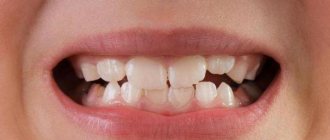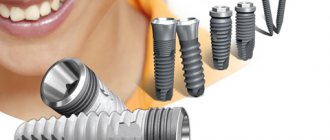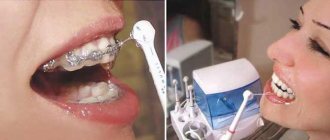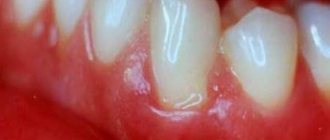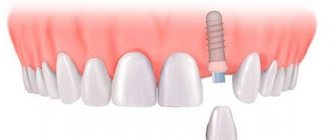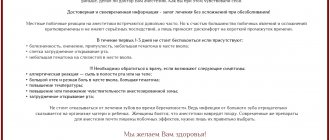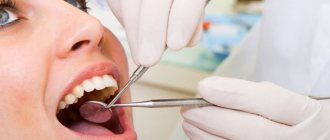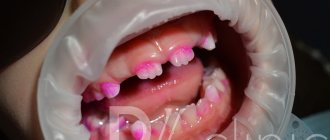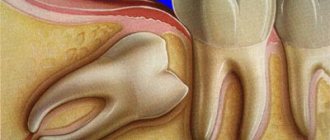You won’t find any kind of toothbrushes on store shelves – classic, electric, with different levels and directions of bristles, with carbon coating. All of them have their advantages and disadvantages in application. And the most important common disadvantage is that none of them will properly clean teeth in the most difficult to reach places, for example, the gaps between the teeth at their base. But brushes do an excellent job of this task, although initially they were intended only for cleaning teeth with braces.
What is a dental brush for?
People use a baby bottle brush when they need to remove milk residues that could not be removed with regular water. The situation is similar with dental brushes. They are used if necessary:
- remove pieces of food from the interdental spaces that cannot be rinsed with water or removed with a regular toothbrush;
- clean the back surface of the teeth;
- ensure better oral hygiene.
There are a number of medical indications for which it is necessary to use a dental brush:
- wearing braces;
- presence of dental prostheses or implants in the mouth;
- periodontal pathology;
- a large number of diastemas and three;
- crowded teeth and their irregular shape;
- smoking and frequent consumption of coloring products;
- chronic diseases that, even in a vegetative state, have a bad effect on the microflora of the oral cavity.
Advantages
Most people began to use brushes because they have many advantages, including:
- The ability to implement hygiene even in the most inaccessible places. The rods have different diameters, they are strong, and any manipulations prevent them from breaking.
- Many companies have patented their bases. They are made from special alloys.
- The adaptation period is long, and all thanks to the fact that high-quality materials are used for their manufacture.
- Intergingival papillae are delicate; brushes, threads, etc. can easily injure them. In the case of pipe cleaners, this is simply impossible, because they have a special shape.
- Usually the fastening is done in the form of a long and thin cone, this allows you to increase the life of the device.
- The brush has bristles of different lengths, with their help you can get rid of any plaque. The material is of high quality and durable, it is difficult to wrinkle.
- The ability to remove plaque from crowns from its convex and concave parts.
- You can clean not only the enamel of your teeth, but also your gums.
A clear example of how a brush works
Any person will be able to choose for himself the type of brushes that he needs. Although many devices are expensive, they are actually effective and can clean your teeth just as well as floss and brushes.
Classification of dental brushes
There are 3 main types of brushes for cleaning teeth:
- Curved with a semicircular shaft and handle. Suitable for cleaning orthodontic structures, they remove plaque very well from the locks of brace systems.
- Cylindrical with fibers of equal length. Needed for high-quality cleaning of wide interdental spaces, gums and the neck of the implant.
- Cone-shaped with bristles in the shape of a cone or herringbone and long hairs at the base. Universal interdental brushes suitable for a wide range of patients.
Application
In appearance, they resemble ordinary household brushes for cleaning bottles. The design is extremely simple: the handle and the bristles themselves, which are usually made in the shape of a cone or cylinder. There are many types of interdental brushes: the types differ in the stiffness of the bristles, the size of the handle and the area of the area for cleaning.
Not everyone has heard about the existence of brushes, so we need to figure out why they are useful. Most often they are used as brushes for braces and bridges. But they are also needed:
- Those who drink a lot of tea and coffee and abuse cigarettes;
- Experiencing gum problems;
- Those whose teeth grow too close together, forming a dense row,
- Or vice versa, when one or more teeth were lost.
In all these cases, a lot of dirt accumulates in the interdental space, which is very difficult to clean. A regular brush does not penetrate to such depth, removing plaque only from the visible outer surface. As a result, accumulations in these spaces contribute to the rapid proliferation of bacteria, which is followed by caries or gum inflammation.
How is a brush better than an irrigator?
You can monitor the cleanliness of the oral cavity using a device such as an irrigator. It gently acts on teeth and gums, carefully removing food debris and pathogenic microorganisms. But irrigators have one significant disadvantage - high cost. Not all patients can afford such a device. But dental brushes are cheap and available to everyone. Moreover, they clean teeth and gums no worse than expensive irrigators.
To clean the spaces between teeth from food debris, many use dental floss or toothpicks, but they can damage the enamel or not completely remove plaque. Such devices are absolutely not suitable for those who have braces, implants or metal-ceramic crowns. If you have the listed structures in your mouth, it is better to use dental brushes.
Manufacturers
Most manufacturers produce not only toothbrushes, toothpastes, threads, but also various brushes.
The most popular and safest of them are the following:
- Curaprox dental brushes. The number of cylindrical heads is 5, the rod has a diameter from 0.6 millimeters to 1.1 millimeters. As for the diameter of the bristles, it is 2.2 millimeters, the widest is 5.5. Curaprox dental brushes are safe and are the most commonly purchased among the variety.
- Oral bi dental brushes allow you to clean standard spaces between teeth, as well as parts of the brace system. The set contains six cone-shaped nozzles, the bristles have a diameter from 3 to 6.6 millimeters. The rod is made of steel; polyamide was used to make the bristles.
- Miradent - bristles with a diameter of 2 millimeters, a shaft of 0.7 millimeters. The device allows you to clean the bracket system, the space between teeth and bridge structures. The shape of the brush head is cylindrical. The kit includes a nozzle and a holder.
- Tepe – minimum diameter, designed to remove plaque when crowns are crowded. The cone with bristles is flexible, they are made of polyamide, stainless steel was used for the rod.
- Interdental – extended handle. The diameter of the rod is 0.5 millimeters, allowing you to clean teeth with a standard row structure. The set contains six nozzles, however, they are the same size.
- INTERPROX – suitable for cleaning teeth with a large gap between them. The model has cylindrical and conical nozzles.
- Lakalut dental brushes have an anatomical handle and a special pad for cleaning the tongue.
Approximate cost of brushes
How to choose the right brush for brushing your teeth
In order to be able to clean the interdental spaces well with an interdental brush, it must be chosen correctly. Recommendations on the most suitable device can be obtained from your dentist. He will take all the necessary measurements and tell you what kind of brush a particular patient needs.
Interdental brushes are classified according to the following parameters:
- handle shape and length;
- shape and diameter of the nozzle;
- material of manufacture;
- length, density and stiffness of the bristles.
The length of the villi is an important parameter on which the quality of cleaning the interdental spaces depends. If the teeth in your mouth are tightly spaced or even crowded, it is better to purchase a product with short bristles (about 1 mm). If there are gaps or diastemas between the teeth, you should opt for a device with long fibers (3 mm).
The level of villi hardness determines whether the gums or enamel will be damaged during the hygiene procedure. People with sensitive teeth and installed implants should choose products with soft bristles, while others should choose products with medium hardness.
The bristles of the brushes are attached to a rod made of plastic or metal. A product with a plastic rod is suitable for people with sensitive teeth, sore gums and other chronic dental diseases. If the oral cavity is healthy, it is better to choose a brush with a metal rod.
Cleaners vary in length. It is better for children to choose products with a short handle - marked S; and adults with long lengths are marked XL.
Popular brands
Compared to an irrigator, a dental brush is inexpensive, so there is no point in purchasing the cheapest, but low-quality product. The following manufacturers produce the highest quality brushes for brushing teeth:
- Colgate: you can immediately purchase a set of brushes with bristles of various lengths.
- Lakalut: the products are made of a hypoallergenic alloy, the metal rod is covered with a special plastic, which makes it possible to use the device with removable and fixed dentures in the mouth.
- Oral-B: interesting brushes of cylindrical and conical shapes, sold in special containers in which they can be stored and taken on a trip.
- President: unique curved products with a bendable rod, ensuring effective cleansing of hard-to-reach areas of the oral cavity.
The cost of dental brushes varies from 250 to 500 rubles , depending on the material of manufacture, size and configuration.
Photos of brushes from different manufacturers
The photo shows a set of Lacalut brushes
In the photo there are pipe cleaners President
The photo shows an Oral-B interdental brush
Pictured is a Colgate interdental brush.
What to do if you have braces?
How to use a dental brush if you have braces?
In fact, this is not an easy task. But good hygiene is necessary, because caries can form under the installation. It is easier to remove food stuck under braces with a brush.
With the help of simple manipulations you can quickly get rid of all pieces of food and plaque.
The device is inserted under the structure so that it is perpendicular to the teeth. The first movements are forward and backward, only after that move left and right along the surface of the tooth. Many dentists recommend this type of brushing twice a day, or better yet, after every meal.
The shape of brushes with a similar design should be conical. Small parts are cleaned with the upper small part, and all food residues are removed with the lower part. Interesting! The product is stored in a special container.
You can also use other types of brushes for braces - these are handles with a small bunch of bristles at the end. But in this case it is convenient to clean the areas around.
Rules for choosing brushes
When purchasing a product, you need to pay attention to some nuances, including:
- How long are the villi? Preliminarily inspect the space between the teeth. If they are located tightly, then the length of the villi should be short (at least one millimeter). If there are large gaps, then the length of the villi should not be less than three millimeters. In addition, it is worth considering the presence of dentures, implants and other structures in the oral cavity.
- Length of the product. There are five length options. When choosing it, you should start from the size of the mouth, the age of the person and other factors. For example, the working part for children is marked with the letter S, for adults there is a size XL.
- How hard are the villi? They can be medium and soft. If your teeth are sensitive, it is better to purchase products with soft bristles; otherwise, the hardness may be medium.
- Rod manufacturing material. It can be plastic or metal. For inflamed gums, the first option is preferable; in all other cases, you can purchase from metal.
- How long is the handle of the product? This parameter is individual, it all depends on how convenient it is for you.
Interesting! The smooth handle is uncomfortable to hold in a wet hand.
The size and shape of the bristles may vary
The most important criterion that you probably need to pay attention to first is quality. It is better if the brand that manufactured the product is known to you, and there are also many positive reviews about it.
At what age can a dental brush be used?
You can allow your child to use a dental brush as soon as he begins to understand the essence of the procedure. The baby should clean the interdental spaces with this device on his own, but care must be taken that it does not damage the teeth or gums. Before purchasing a dental appliance, you should consult your dentist.
If you choose the right dental brushes and use them wisely, you can improve the quality of your oral hygiene. But in no case should these devices replace a brush with toothpaste, dental floss and mouth rinse.
How to use dental brushes correctly
Immediately after purchase, the brush must be treated with an antiseptic, after which you can begin the process of cleaning the gaps between the teeth. The procedure consists of several stages, you need:
- Bring the product to the interdental space to be cleaned.
- Place it perpendicular to the surface of the teeth.
- Carefully insert the rod with bristles into the interdental gap; it should go through and appear on the opposite side.
- Clean the gap using translational or rotational movements.
Each interdental space must be treated in this way. When inserting bristles into the spaces between the teeth, do not apply force, otherwise the enamel may be damaged. If the product does not fit into the slot, you need to take a rod of a smaller diameter. The duration of brushing your teeth should be at least 2 minutes.
When cleaning between teeth with brushes, you do not need to use toothpaste or powder. After each hygiene procedure, you need to rinse your mouth with plain water or an antiseptic.
If possible, you should use interdental brushes 2 times a day. But depending on the structural features of the jaw and the presence of orthodontic structures, variations are possible.
